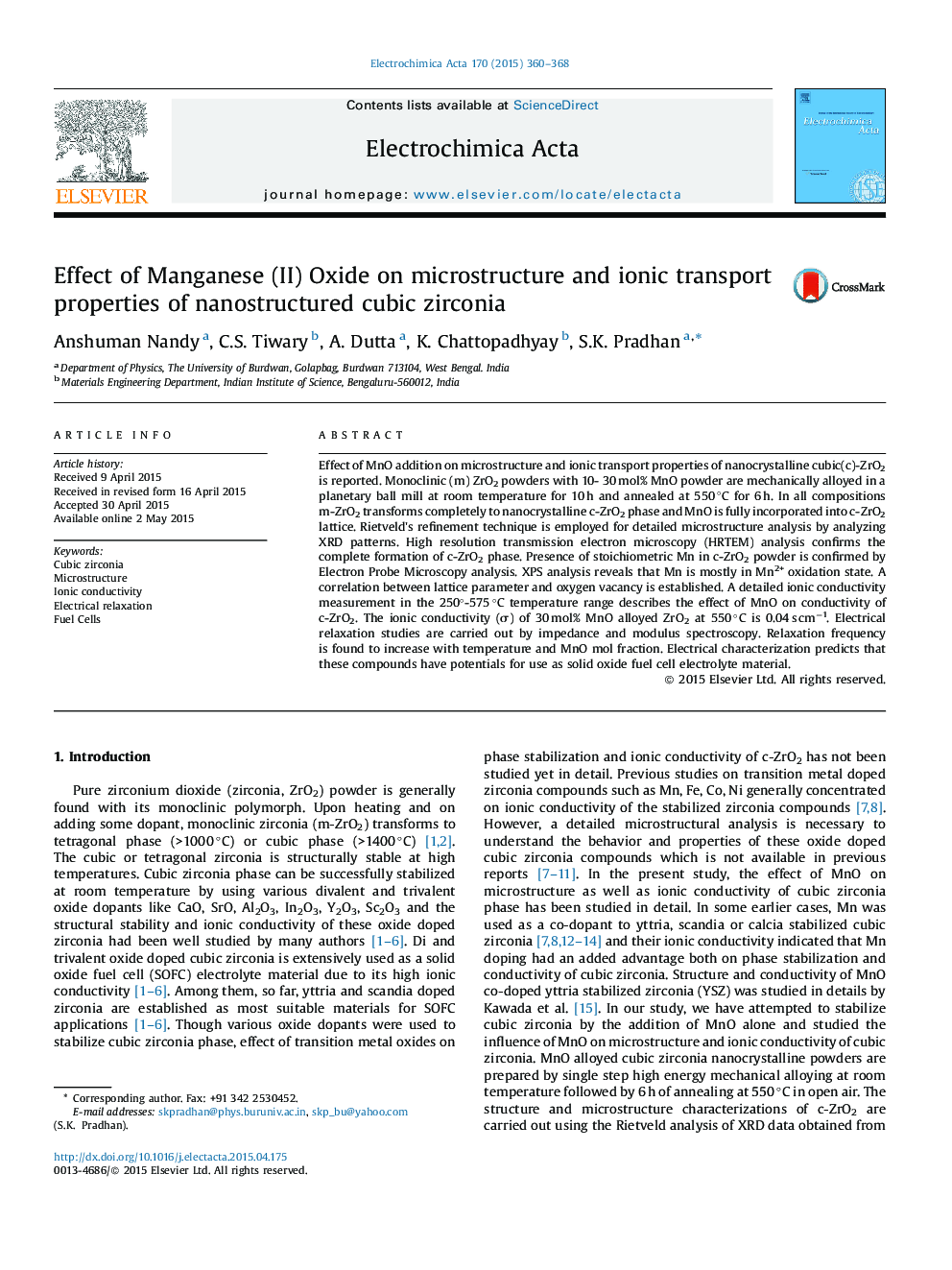| Article ID | Journal | Published Year | Pages | File Type |
|---|---|---|---|---|
| 183992 | Electrochimica Acta | 2015 | 9 Pages |
•10-30 mol% MnO is used to stabilize cubic ZrO2 by mechanical alloying.•Microstructure of MnO alloyed c-ZrO2 is characterized by XRD and HRTEM.•Effect of MnO on Ionic transport of c-ZrO2 is discussed.•Relaxation mechanism is discussed by analyzing impedance and modulus spectroscopy.•Possible use of MnO-ZrO2 as an electrolyte material is discussed.
Effect of MnO addition on microstructure and ionic transport properties of nanocrystalline cubic(c)-ZrO2 is reported. Monoclinic (m) ZrO2 powders with 10- 30 mol% MnO powder are mechanically alloyed in a planetary ball mill at room temperature for 10 h and annealed at 550 °C for 6 h. In all compositions m-ZrO2 transforms completely to nanocrystalline c-ZrO2 phase and MnO is fully incorporated into c-ZrO2 lattice. Rietveld's refinement technique is employed for detailed microstructure analysis by analyzing XRD patterns. High resolution transmission electron microscopy (HRTEM) analysis confirms the complete formation of c-ZrO2 phase. Presence of stoichiometric Mn in c-ZrO2 powder is confirmed by Electron Probe Microscopy analysis. XPS analysis reveals that Mn is mostly in Mn2+ oxidation state. A correlation between lattice parameter and oxygen vacancy is established. A detailed ionic conductivity measurement in the 250°-575 °C temperature range describes the effect of MnO on conductivity of c-ZrO2. The ionic conductivity (σ) of 30 mol% MnO alloyed ZrO2 at 550 °C is 0.04 s cm−1. Electrical relaxation studies are carried out by impedance and modulus spectroscopy. Relaxation frequency is found to increase with temperature and MnO mol fraction. Electrical characterization predicts that these compounds have potentials for use as solid oxide fuel cell electrolyte material.
Graphical abstractFigure optionsDownload full-size imageDownload as PowerPoint slide
